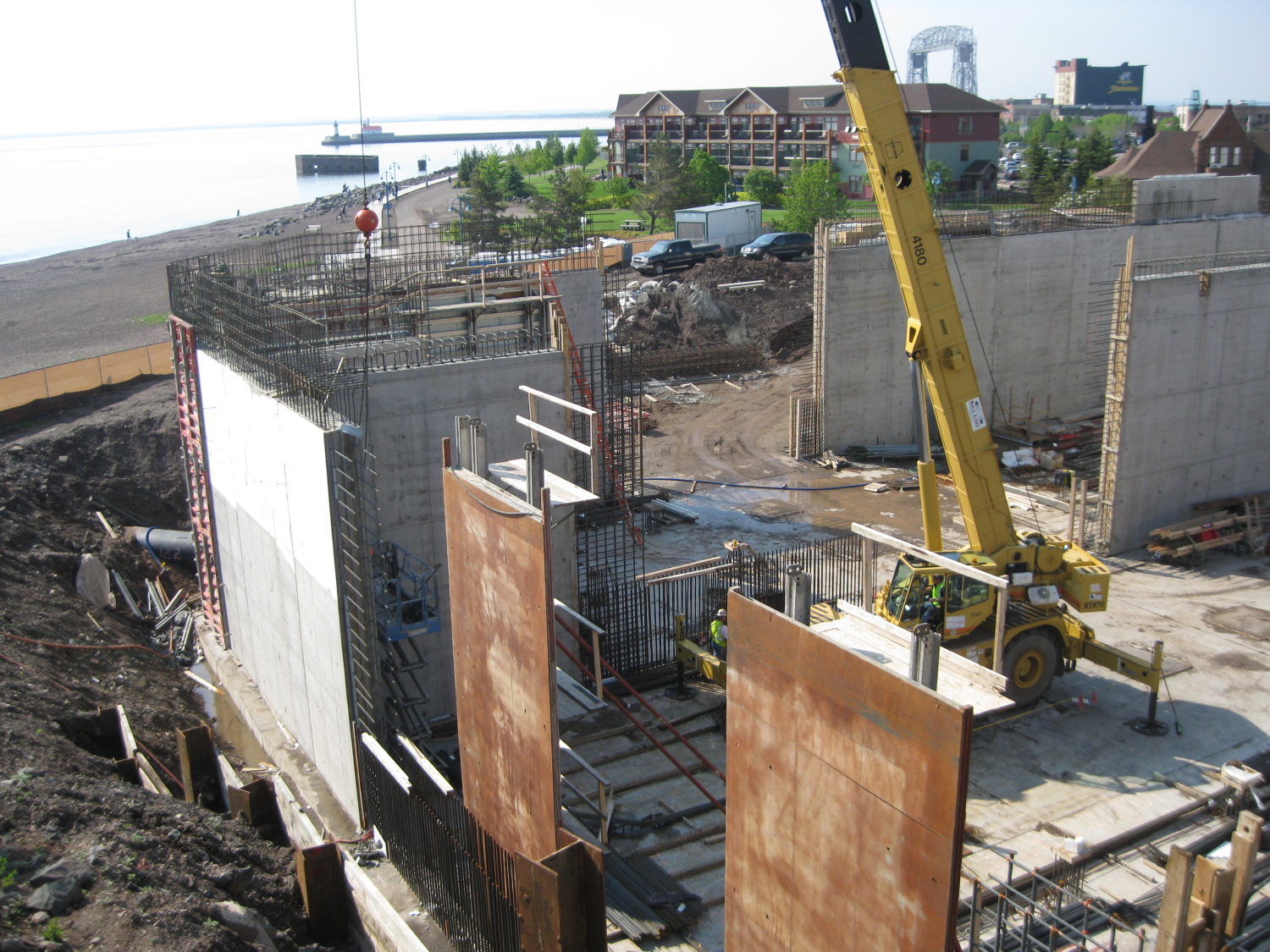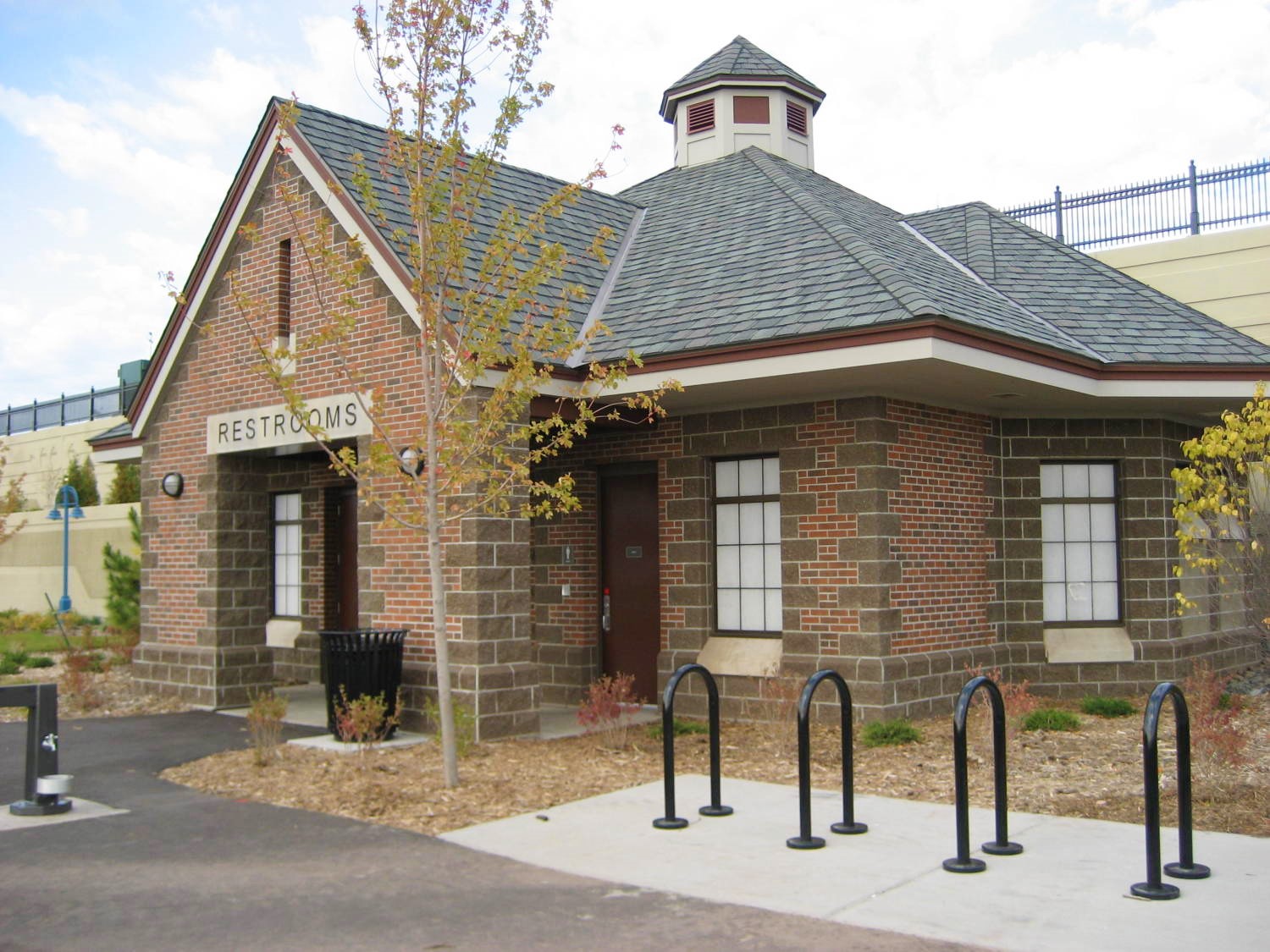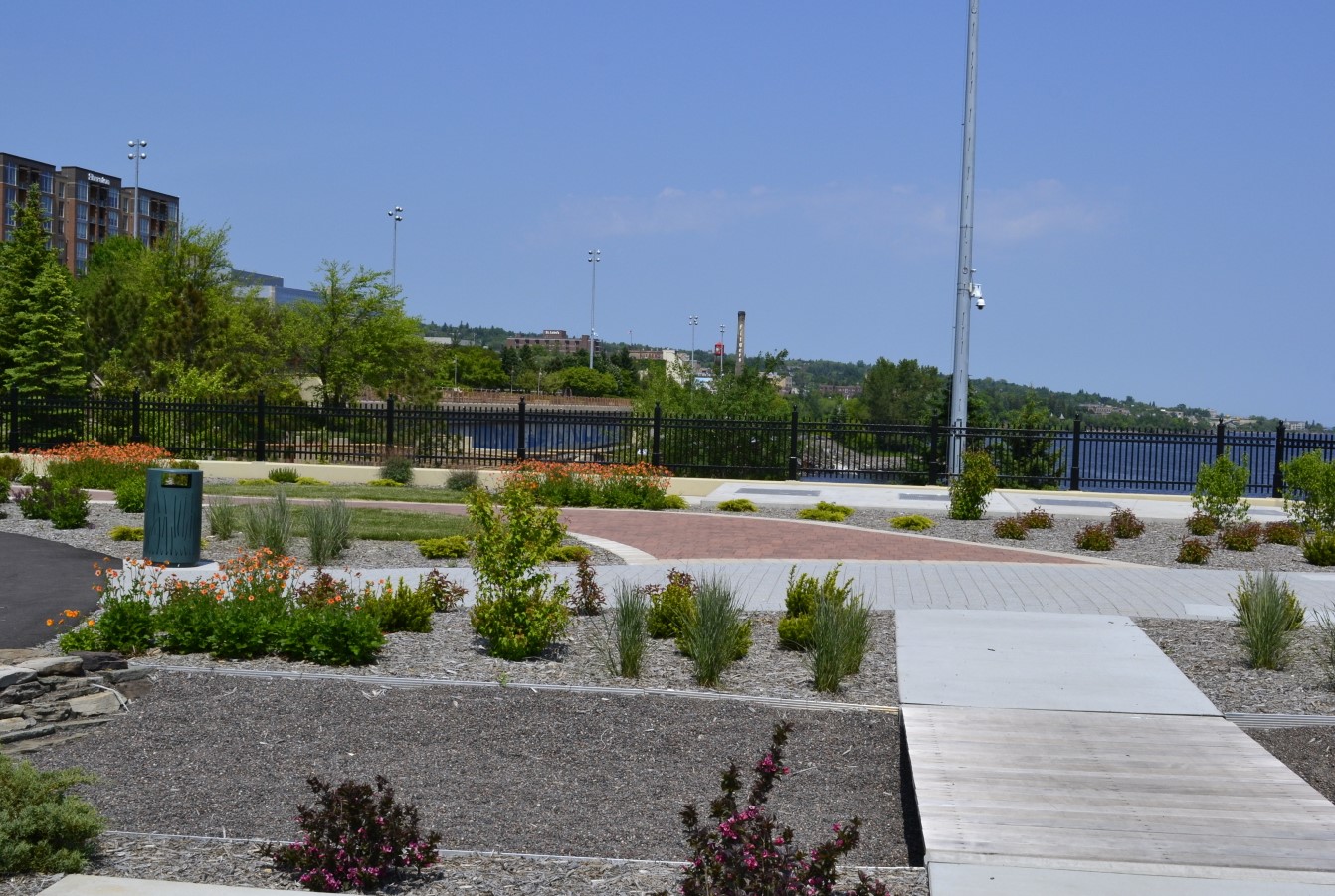MSA worked with the City of Duluth to solve a serious sanitary sewer overflow problem. They did this, in part, by camouflaging an 8.2-million-gallon tank 30 feet tall and the size of a football field, all within a popular tourist area called Canal Park. The tank is hidden in plain sight, concealed below what is now a public plaza with expansive views of the great lake and shoreline. Situated just adjacent to the water’s edge, the project had a variety of complex and precarious challenges, including the removal of contaminated soils, strict regulatory requirements, location within a busy tourism district and the need to protect the world’s largest freshwater lake by surface area — Lake Superior.

When the Environmental Protection Agency (EPA) issued strict orders to control and eliminate the occurrence of sanitary sewer overflows (SSO), the City of Duluth knew the project had to be done right. MSA had a long-standing relationship with the City, having completed other SSO storage facility projects within the community, and with a strong background in environmental remediation and regulatory compliance.
The location for the proposed new storage facility was selected due to its position at the base of the City’s steep hillside, a natural gravity-fed collector for any SSO discharge occurring during large rain events. Over the decades, the site had seen a variety of prior industrial and less-than-optimal waterside uses: scrap iron and metal operations, coal and oil storage, filling station and railroad business. MSA was asked to first complete a Phase I Environmental Site Assessment and a Phase II investigation to identify the severity of the contaminated soils and to prepare a Response Action Plan to implement during site construction. Meanwhile, the City entered the Minnesota Pollution Control Agency’s (MPCA) Voluntary Investigation and Cleanup Program and Petroleum Brownfields Program to facilitate approvals for the work. Ultimately, design for the new 8.2-million-gallon storage basin required the removal and safe, offsite disposal of over 50,000 cubic yards of contaminated and “low-impact” soils.

The $22-million project then commenced construction and involved a variety of integrated engineering components: new sanitary sewer diversion structures, large-diameter interconnecting sanitary sewers carefully rerouted beneath downtown Duluth and the City’s Lakewalk, an eight-million-gallon-per-day lift station, associated maintenance shop and complementary new public restroom facility—designed to reflect the aesthetic of the Endion Station historic train station nearby.

Approximately 70% of the new storage tank is hidden, while the visible portions blend seamlessly into the existing 3.75-acre site. Accessible ramps and staircases lead to a landscaped upper plaza and Sister Cities Park, with an expansive vegetative roof, native plants, benches and artwork symbolic of the connection to Duluth’s five sister cities across the globe.
The result is a beautifully concealed new SSO storage facility that cleans up a former contaminated site and protects the precious waters of Lake Superior, all while serving as a popular new attraction for tourists, locals and ship-watchers of the Great Lakes region.

